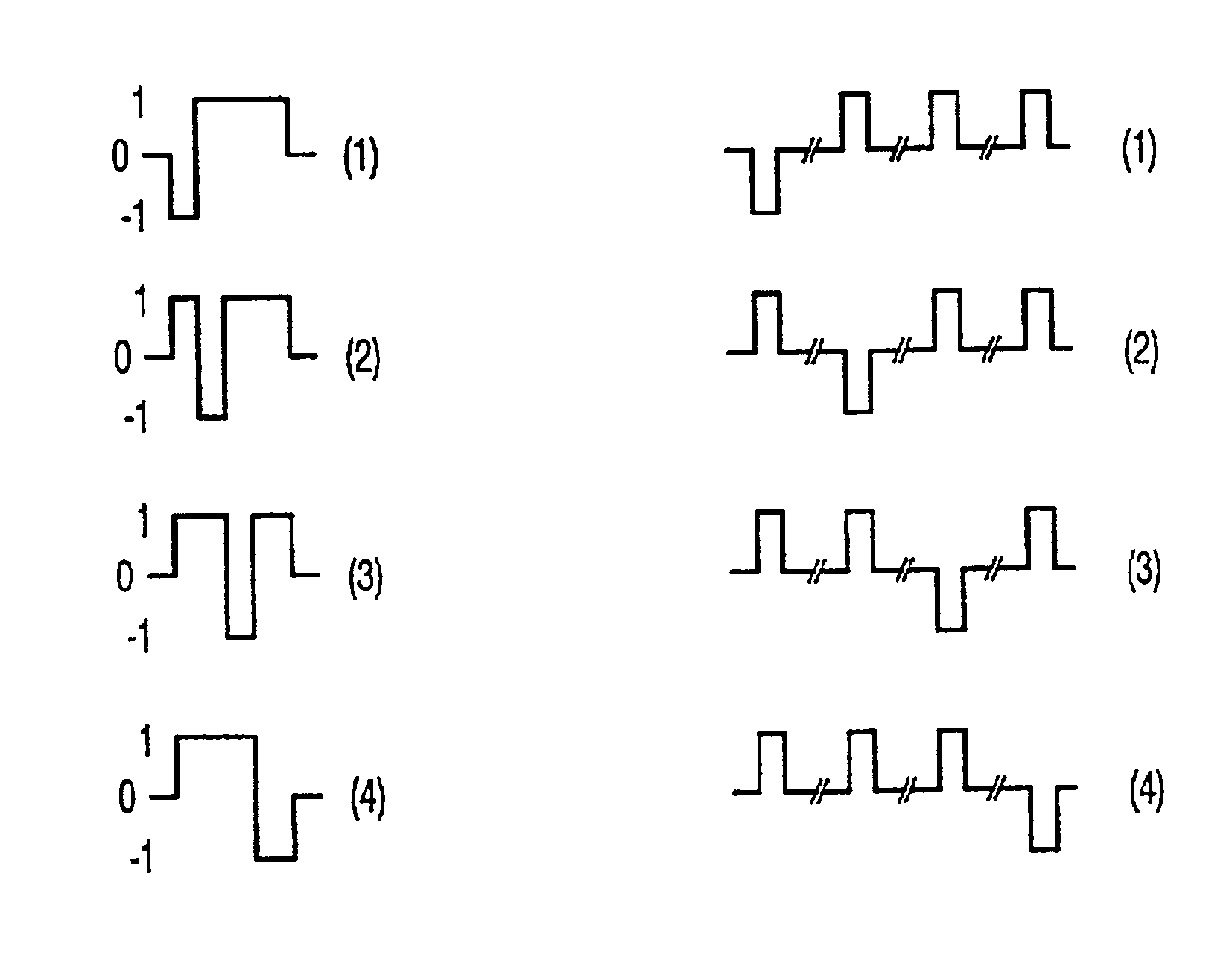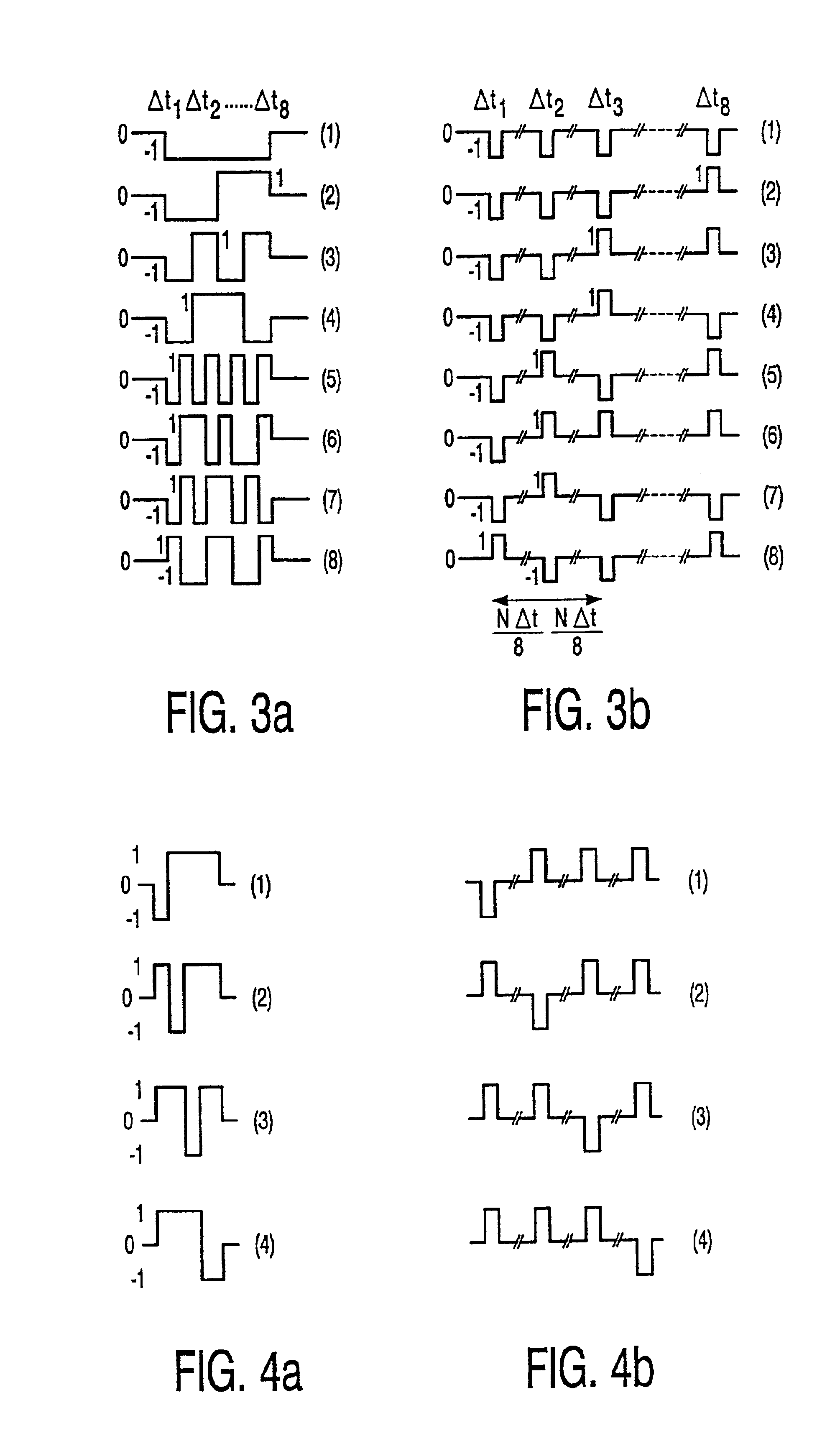Display device
a display device and display technology, applied in static indicating devices, instruments, multi-frequency code systems, etc., can solve the problem of more expensive drive electronics, and achieve the effect of more expensiv
- Summary
- Abstract
- Description
- Claims
- Application Information
AI Technical Summary
Benefits of technology
Problems solved by technology
Method used
Image
Examples
Embodiment Construction
[0016]FIG. 1 shows a display device comprising a matrix 1 of pixels at the area of crossings of N rows 2 and M columns 3 which are provided as row and column electrodes on facing surfaces of substrates 4, 5, as can be seen in the cross-section shown in the matrix 1. The liquid crystal material 6 is present between the substrates. Other elements such as orientation layers, polarizers, etc. are omitted for the sake of simplicity in the cross-section.
[0017]The device further comprises a row function generator 7 in the form of, for example, a ROM for generating orthogonal signals Fi(t) for driving the rows 2. Similarly as described in said article by Scheffer and Clifton, row vectors driving a group ofp rows via drive circuits 8 are defined during each elementary time interval. The row vectors are written into a row function register 9.
[0018]Information 10 to be displayed is stored in a pxM buffer memory 11 and read as information vectors per elementary unit of time. Signals for the col...
PUM
 Login to View More
Login to View More Abstract
Description
Claims
Application Information
 Login to View More
Login to View More - R&D
- Intellectual Property
- Life Sciences
- Materials
- Tech Scout
- Unparalleled Data Quality
- Higher Quality Content
- 60% Fewer Hallucinations
Browse by: Latest US Patents, China's latest patents, Technical Efficacy Thesaurus, Application Domain, Technology Topic, Popular Technical Reports.
© 2025 PatSnap. All rights reserved.Legal|Privacy policy|Modern Slavery Act Transparency Statement|Sitemap|About US| Contact US: help@patsnap.com



